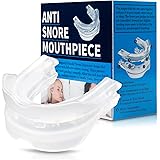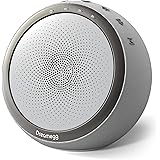There’s nothing quite like settling into your tent after a long day on the trail, the exhaustion from miles logged giving way to the promise of rest. However, that promise can quickly turn into a nightmare if your sleeping pad fails to deliver on warmth and comfort, leaving you tossing and turning, dreading the morning. For many backpackers, the quest for the perfect sleep system is an ongoing saga, balancing weight, insulation, and plushness against the harsh realities of the backcountry.
The video above delves into a strong contender for that elusive title: the Exped Ultra 5R sleeping pad. Often overlooked in a market saturated with high-profile competitors, this pad emerges as a surprisingly versatile and highly effective option for three-season, and even some four-season, adventures. Let’s unpack why this pad might be one of the most underrated pieces of gear currently available and explore its nuances in greater detail, building upon the insights shared in the review.
Exped Ultra 5R Review: Unpacking an Underrated Sleeping Pad
When discussing high-performance sleeping pads, certain names frequently dominate the conversation. However, the Exped Ultra 5R has quietly garnered a dedicated following among those in the know, offering a compelling blend of features that challenge the status quo. This pad isn’t just about meeting expectations; it’s about exceeding them in key areas that matter most to serious outdoor enthusiasts.
The Featherlight Champion: Weight and Packability
One of the first attributes that catches the eye when evaluating the Exped Ultra 5R is its impressive weight. In its regular size, this pad tips the scales at a mere 444 grams, or just under one pound. For those who obsess over every gram in their pack, this figure is immediately appealing, rivaling some of the lightest pads on the market. The regular wide version remains competitive at 654 grams, offering more space without a prohibitive weight penalty.
This ultralight characteristic makes the Exped Ultra 5R an ideal choice for thru-hikers, fastpackers, and anyone aiming to minimize their base weight. A lighter pack translates directly to less fatigue on the trail, allowing for longer days and a more enjoyable overall experience. However, despite its low weight, it’s worth noting that its synthetic insulation does contribute to a bulkier packed size compared to pads relying solely on reflective barriers, a trade-off often accepted for superior warmth.
Conquering the Cold: R-Value and Insulation Technology
Beyond its low weight, the Exped Ultra 5R truly shines in its thermal performance, boasting a formidable R-value of 4.8. For the uninitiated, R-value is a critical metric indicating a sleeping pad’s resistance to heat flow; higher numbers mean better insulation. An R-value of 4.8 places this pad firmly in the category of three-season+ pads, capable of handling temperatures well below freezing, even on snow or frozen ground.
The secret to this exceptional warmth lies in Exped’s intelligent use of 160 grams per cubic meter of polyester synthetic insulation. Unlike some designs where insulation can shift or clump, Exped welds this polyester fill to both the top and bottom fabric layers. As the pad inflates, this construction ensures the insulation expands evenly throughout each baffle, effectively preventing convective heat loss – the transfer of heat away from your body through air currents within the pad. This sophisticated engineering results in consistent warmth, keeping you toasty even when the mercury plummets.
A Cushion of Comfort: Thickness, Baffles, and Materials
Warmth is essential, but comfort is king for a restful night. The Exped Ultra 5R addresses this with a generous 3-inch thickness across its main sleeping surface. Crucially, it incorporates 3.5-inch thick side rails, a design element often appreciated by restless sleepers or those who tend to roll off their pads. These slightly elevated edges create a subtle cradle, helping to keep you centered and secure throughout the night.
The pad utilizes a vertical baffle system, which, while not universally regarded as the absolute pinnacle of comfort (some prefer horizontal or hybrid designs), is significantly more comfortable than traditional horizontal baffles. Exped’s specific execution of this design, combined with its choice of materials, reportedly makes it one of the most comfortable vertical baffle pads on the market. The use of a 20-denier polyester fabric, rather than harsher nylons, is a subtle but impactful detail. This polyester has a slight stretch and a softer hand feel, contributing to an overall plush sensation that molds to your body, enhancing the perceived comfort significantly.
Durability and Peace of Mind: Material and Warranty
While the 20-denier polyester fabric contributes to comfort, it also raises questions about long-term durability, a common concern with lightweight gear. Lower denier fabrics, by their nature, are less resistant to punctures and abrasions than their higher denier counterparts. This concern is valid, particularly given past issues with similar denier materials in other popular sleeping pads.
However, real-world usage and online reviews for the Exped Ultra 5R largely mitigate these worries. Many users, including the reviewer, report no significant issues over several years of use, suggesting that Exped’s specific polyester blend or construction method may offer more resilience than anticipated. Adding a crucial layer of reassurance is Exped’s robust 5-year warranty. Anecdotal evidence suggests Exped’s customer service is exceptionally proactive, often extending goodwill even beyond the stated warranty period for manufacturing defects, providing invaluable peace of mind for an investment like this.
The Elephant in the Pack: Price and Bulk
At approximately $200, the Exped Ultra 5R sits at the higher end of the sleeping pad spectrum. While this price point is not uncommon for premium, high-performance backpacking gear, it is certainly a significant investment. For budget-conscious adventurers, cheaper alternatives exist, though often with compromises in warmth, weight, or comfort. The decision often comes down to prioritizing performance for specific backcountry conditions.
Another aspect to consider is the pad’s packed volume. Despite its light weight, the synthetic insulation inherently takes up more space than reflective insulation. This results in a bulkier packed size that some ultralight enthusiasts might find challenging to integrate into smaller capacity packs. While it doesn’t add much to the scale, it will demand a fair bit of real estate in your backpack, particularly when compared to pads like the Therm-a-Rest NeoAir XLite, which, while potentially less comfortable, packs down significantly smaller.
Minor Nuances: Noise and Valve Placement
Some users have reported a slight crinkliness or noise from the Exped Ultra 5R, a common characteristic of insulated sleeping pads. While this is highly subjective and often depends on individual sleeping styles and sensitivities, it’s a factor to consider if you are particularly sensitive to noise in the backcountry. Interestingly, the reviewer notes that they haven’t personally experienced this as an issue, often mitigated by earplugs.
The valve design, while functional, presents a minor ergonomic quibble. The Ultra 5R features separate inflation and deflation valves, a convenient system that integrates seamlessly with Exped’s Schnozzel pump bag for rapid inflation. However, their placement on the underside of the pad can make on-the-fly adjustments to firmness slightly awkward if you’re already lying down. This is a small detail but can impact convenience for those who frequently fine-tune their pad’s pressure during the night.
How It Stacks Up: Competitor Comparisons
To truly appreciate the Exped Ultra 5R, it’s helpful to benchmark it against its primary rivals. The video highlights two key competitors: the Nemo Tensor Insulated and the Big Agnes Rapid SL Insulated. Each offers a different balance of the core attributes.
The Nemo Tensor, renowned for its low weight and quiet operation, often comes out ahead in the weight category. However, it typically offers less warmth (a lower R-value) and can feel less plush than the Exped. For gram counters in milder conditions, the Tensor remains a strong choice. Conversely, the Big Agnes Rapid SL Insulated might offer a marginal increase in comfort for some sleepers, but it often comes with a noticeable weight penalty and slightly less insulating power compared to the Exped Ultra 5R. This comparative analysis reinforces the Exped Ultra 5R’s unique position, striking an impressive balance across these critical metrics.
Another excellent point of comparison, as mentioned in the video, is the Therm-a-Rest XLite NXT. If an absolute best-in-class warmth-to-weight ratio is your sole priority, and you’re willing to potentially sacrifice a degree of overall comfort and plushness, the XLite NXT is undeniably a market leader. However, for those who seek a more luxurious sleep experience without a massive weight penalty, the Exped Ultra 5R holds its own as a compelling alternative, marrying robust insulation with a truly comfortable sleeping surface, offering warmth and comfort that is hard to beat.








